DeWalt DWP690 Handleiding
Bekijk gratis de handleiding van DeWalt DWP690 (7 pagina’s), behorend tot de categorie Router. Deze gids werd als nuttig beoordeeld door 61 mensen en kreeg gemiddeld 4.9 sterren uit 31 reviews. Heb je een vraag over DeWalt DWP690 of wil je andere gebruikers van dit product iets vragen? Stel een vraag
Pagina 1/7

INSTRUCTION MANUAL
GUIDE D'UTILISATION
MANUAL DE INSTRUCCIONES
INSTRUCTIVO DE OPERACIÓN, CENTROS DE SERVICIO Y PÓLIZA
DE GARANTÍA. ADVERTENCIA: LÉASE ESTE INSTRUCTIVO ANTES
DE USAR EL PRODUCTO.
DEWALT Industrial Tool Co., 701 Joppa Road, Baltimore, MD 21286
(DEC09) Part No. N046377 DWP690
Copyright © 2009 DEWALT
The following are trademarks for one or more D WALT power tools: the yellow and black E
color scheme; the “D” shaped air intake grill; the array of pyramids on the handgrip; the kit box
configuration; and the array of lozenge-shaped humps on the surface of the tool.
DWP690 Heavy-Duty 1-3/4 HP Fixed Base Router
Toupie 1-3/4 HP à base fixe industrielle, DWP690
Rebajadora para trabajos pesados DWP690 con base fija y 1-3/4 HP
If you have questions or comments, contact us.
Pour toute question ou tout commentaire, nous contacter.
Si tiene dudas o comentarios, contáctenos.
1-800-4-D WALT • www.dewalt.comE
Definitions: Safety Guidelines
The definitions below describe the level of severity for each signal word. Please read the
manual and pay attention to these symbols.
DANGER: Indicates an imminently hazardous situation which, if not avoided, result will
in death or serious injury.
WARNING: could Indicates a potentially hazardous situation which, if not avoided,
result in death or serious injury.
CAUTION: may Indicates a potentially hazardous situation which, if not avoided, result
in minor or moderate injury.
NOTICE: Indicates a practice not related to personal injury which, if not avoided, may
result in property damage.
IF YOU HAVE ANY QUESTIONS OR COMMENTS ABOUT THIS OR ANY DEWALT TOOL,
CALL US TOLL FREE AT: 1-800-4-DEWALT (1-800-433-9258)
WARNING: To reduce the risk of injury, read the instruction manual.
General Power Tool Safety Warnings
WARNING! Read all safety warnings and all instructions. Failure to follow the warnings
and instructions may result in electric shock, fire and/or serious injury.
SAVE ALL WARNINGS AND INSTRUCTIONS
FOR FUTURE REFERENCE
The term “power tool” in the warnings refers to your mains-operated (corded) power tool or
battery-operated (cordless) power tool.
1) WORK AREA SAFETY
a) Keep work area clean and well lit. Cluttered or dark areas invite accidents.
b) Do not operate power tools in explosive atmospheres, such as in the presence of
flammable liquids, gases or dust. Power tools create sparks which may ignite the dust
or fumes.
c) Keep children and bystanders away while operating a power tool. Distractions can
cause you to lose control.
2) ELECTRICAL SAFETY
a) Power tool plugs must match the outlet. Never modify the plug in any way. Do not
use any adapter plugs with earthed (grounded) power tools. Unmodified plugs and
matching outlets will reduce risk of electric shock.
b) Avoid body contact with earthed or grounded surfaces such as pipes, radiators,
ranges and refrigerators. There is an increased risk of electric shock if your body is
earthed or grounded.
c) Do not expose power tools to rain or wet conditions. Water entering a power tool will
increase the risk of electric shock.
d) Do not abuse the cord. Never use the cord for carrying, pulling or unplugging the
power tool. Keep cord away from heat, oil, sharp edges or moving parts. Damaged or
entangled cords increase the risk of electric shock.
e) When operating a power tool outdoors, use an extension cord suitable for outdoor
use. Use of a cord suitable for outdoor use reduces the risk of electric shock.
f) If operating a power tool in a damp location is unavoidable, use a ground fault circuit
interrupter (GFCI) protected supply. Use of a GFCI reduces the risk of electric shock.
3) PERSONAL SAFETY
a) Stay alert, watch what you are doing and use common sense when operating a
power tool. Do not use a power tool while you are tired or under the influence of
drugs, alcohol or medication. A moment of inattention while operating power tools may
result in serious personal injury.
b) Use personal protective equipment. Always wear eye protection. Protective equipment
such as dust mask, non-skid safety shoes, hard hat, or hearing protection used for
appropriate conditions will reduce personal injuries.
c) Prevent unintentional starting. Ensure the switch is in the off position before
connecting to power source and/or battery pack, picking up or carrying the tool.
Carrying power tools with your finger on the switch or energising power tools that have the
switch on invites accidents.
d) Remove any adjusting key or wrench before turning the power tool on. A wrench or
a key left attached to a rotating part of the power tool may result in personal injury.
e) Do not overreach. Keep proper footing and balance at all times. This enables better
control of the power tool in unexpected situations.
f) Dress properly. Do not wear loose clothing or jewellery. Keep your hair, clothing and
gloves away from moving parts. Loose clothes, jewellery or long hair can be caught in
moving parts.
g) If devices are provided for the connection of dust extraction and collection facilities,
ensure these are connected and properly used. Use of dust collection can reduce dust-
related hazards.
4) POWER TOOL USE AND CARE
a) Do not force the power tool. Use the correct power tool for your application. The
correct power tool will do the job better and safer at the rate for which it was designed.
b) Do not use the power tool if the switch does not turn it on and off. Any power tool that
cannot be controlled with the switch is dangerous and must be repaired.
c) Disconnect the plug from the power source and/or the battery pack from the power
tool before making any adjustments, changing accessories, or storing power tools.
Such preventive safety measures reduce the risk of starting the power tool accidentally.
d) Store idle power tools out of the reach of children and do not allow persons
unfamiliar with the power tool or these instructions to operate the power tool. Power
tools are dangerous in the hands of untrained users.
e) Maintain power tools. Check for misalignment or binding of moving parts, breakage
of parts and any other condition that may affect the power tool’s operation. If
damaged, have the power tool repaired before use. Many accidents are caused by
poorly maintained power tools.
f) Keep cutting tools sharp and clean. Properly maintained cutting tools with sharp cutting
edges are less likely to bind and are easier to control.
g) Use the power tool, accessories and tool bits etc., in accordance with these
instructions taking into account the working conditions and the work to be
performed. Use of the power tool for operations different from those intended could result
in a hazardous situation.
5) SERVICE
a) Have your power tool serviced by a qualified repair person using only identical
replacement parts. This will ensure that the safety of the power tool is maintained.
Additional Safety Instructions for Routers
• Hold power tools by insulated gripping surfaces when performing an operation where
the cutting tool may contact hidden wiring or its own cord. Contact with a “live” wire will
make exposed metal parts of the tool “live” and shock the operator.
• Use clamps or another practical way to secure and support the workpiece to a stable
platform. Holding the work by hand or against your body leaves it unstable and may lead to
loss of control.
• Metal cutting with router: If using router for metal cutting, clean out tool often. Metal
dust and chips often accumulate on interior surfaces and could create a risk of serious injury,
electrical shock or death.
• Keep handles dry, clean, and free from oil and grease. This will enable better control of
the tool.
• Maintain firm grip with both hands on router to resist starting torque.
• Keep hands away from cutting area. Never reach under the workpiece for any reason.
Keep the router base firmly in contact with the workpiece when cutting. Hold the router only
by the handles. These precautions will reduce the risk of personal injury.
• Do not hand-hold the router in an upside-down or horizontal position. The motor can
separate from the base if not properly attached according to the instructions.
• Never run the motor unit when it is not inserted in one of the router bases. The motor
is not designed to be handheld.
• Keep cutting pressure constant. Do not overload motor.
• Check to see that the cord will not snag or impede the routing operation.
• Use sharp cutters. Dull cutters may cause the router to swerve or stall under pressure.
• Be sure that the motor has stopped completely before you lay the router down. If the
cutter head is still spinning when the tool is laid down, it could cause injury or damage.
• Be sure that the router bit is clear of the workpiece before starting the motor. If the bit
is in contact with the workpiece when the motor starts it could make the router jump, causing
damage or injury.
• ALWAYS disconnect tool from power source before making adjustments or changing
bits.
• Keep hands clear of bit when motor is running to prevent personal injury.
• NEVER touch the bit immediately after use. It may be extremely hot.
• Provide clearance under workpiece for router bit when through-cutting.
• Tighten collet nut securely to prevent the bit from slipping.
• Never tighten collet nut without a bit.
• Do not use router bits with a diameter in excess of 2-1/8" (54 mm) in this tool.
• Avoid Climb-Cutting (cutting in direction opposite that shown in Fig. 6). Climb-Cutting
increases the chance for loss of control resulting in possible injury. When “Climb-
Cutting” is required (backing around a corner), exercise extreme caution to maintain control
of router. Make smaller cuts and remove minimal material with each pass.
• Always keep chip shield (if possible) clean and in place.
• An extension cord must have adequate wire size (AWG or American Wire Gauge) for
safety. The smaller the gauge number of the wire, the greater the capacity of the cable, that
is 16 gauge has more capacity than 18 gauge. An undersized cord will cause a drop in line
voltage resulting in loss of power and overheating. When using more than one extension to
make up the total length, be sure each individual extension contains at least the minimum
wire size. The following table shows the correct size to use depending on cord length and
nameplate ampere rating. If in doubt, use the next heavier gauge. The smaller the gauge
number, the heavier the cord.
Minimum Gauge for Cord Sets
Ampere Rating
Volts Total Length of Cord in Feet (meters)
120V 25 (7.6) 50 (15.2) 100 (30.5) 150 (45.7)
240V 50 (15.2) 100 (30.5) 200 (61.0) 300 (91.4)
More
Than
Not More
Than
AWG
0 6 18 16 16 14
6 10 18 16 14 12
10 12 16 16 14 12
12 16 14 12 Not Recommended
WARNING: ALWAYS use safety glasses. Everyday eyeglasses are NOT safety glasses. Also
use face or dust mask if cutting operation is dusty. ALWAYS WEAR CERTIFIED SAFETY
EQUIPMENT:
• ANSI Z87.1 eye protection (CAN/CSA Z94.3),
• ANSI S12.6 (S3.19) hearing protection,
• NIOSH/OSHA/MSHA respiratory protection.
WARNING: Some dust created by power sanding, sawing, grinding, drilling, and other
construction activities contains chemicals known to cause cancer, birth defects or other
reproductive harm. Some examples of these chemicals are:
• lead from lead-based paints,
• crystalline silica from bricks and cement and other masonry products, and
• arsenic and chromium from chemically-treated lumber.
Your risk from these exposures varies, depending on how often you do this type of work. To
reduce your exposure to these chemicals: work in a well ventilated area, and work with approved
safety equipment, such as those dust masks that are specially designed to filter out microscopic
particles.

• Avoid prolonged contact with dust from power sanding, sawing, grinding, drilling,
and other construction activities. Wear protective clothing and wash exposed areas
with soap and water. Allowing dust to get into your mouth, eyes, or lay on the skin may
promote absorption of harmful chemicals.
WARNING: Use of this tool can generate and/or disburse dust, which may cause serious and
permanent respiratory or other injury. Always use NIOSH/OSHA approved respiratory protection
appropriate for the dust exposure. Direct particles away from face and body. Always operate tool
in well-ventilated area and provide for proper dust removal. Use dust collection system wherever
possible.
WARNING: Always use eye protection. All users and bystanders must wear eye protection
that conforms to ANSI Z87.1.
WARNING: Always wear proper personal hearing protection that conforms to ANSI
S12.6 (S3.19) during use. Under some conditions and duration of use, noise from this product
may contribute to hearing loss.
• The label on your tool may include the following symbols. The symbols and their definitions
are as follows:
V ........................ volts A ....................... amperes
Hz ...................... hertz W ...................... watts
min .................... minutes .................... alternating current
................. direct current .................... alternating or direct current
...................... Class I Construction no ..................... no load speed
.......................... (grounded) ..................... earthing terminal
...................... Class II Construction ..................... safety alert symbol
.......................... (double insulated) BPM ................. beats per minute
…/min ............... per minute RPM ................. revolutions per minute
Motor
Your D WALT tool is powered by a D WALT-built motor. Be sure your power supply agrees E E
with the nameplate markings. Voltage decrease of more than 10% will cause loss of power and
overheating. All DEWALT tools are factory tested.
COMPONENTS (Fig. 1)
WARNING: Never modify the power tool or any part of it. Damage or personal injury could
result.
A. Motor E. Collet
B. Handles F. Subbase
C. Depth adjusting ring G. OFF/ON switch
D. Fixed base H. Clamp
INTENDED USE
This heavy-duty router has been designed for professional routing at various work sites (i.e.,
woodworking shops). DO NOT use under wet conditions or in presence of flammable liquids or
gases.
This heavy-duty router is a professional power tool. DO NOT let children come into contact with
the tool. Supervision is required when inexperienced operators use this tool.
ADJUSTMENTS
WARNING: To reduce the risk of injury, turn unit off and disconnect it from power
source before installing and removing accessories, before adjusting or when making
repairs. An accidental start-up can cause injury.
WARNING: To reduce the risk of injury, accessories must be rated for at least the speed
recommended on the tool warning label. Accessories running over rated speed can fly apart and
cause injury. Accessory ratings must always be above tool speed as shown on tool nameplate.
WARNING: To reduce the risk of injury, do not use router bits with a diameter in excess
of 2-1/8" (54 mm) in this tool.
WARNING: To reduce the risk of injury, never modify the power tool or any part of it. Damage
or personal injury could result.
Installing the Bit (Fig. 2, 3)
WARNING: To reduce the risk of injury, turn unit off and disconnect it from power
source before installing and removing accessories, before adjusting or when making
repairs. An accidental start-up can cause injury.
WARNING: To reduce the risk of injury, do not use router bits with a diameter in excess of
2-1/8" (54 mm) in this tool.
NOTICE: Avoid possible damage to the collet. Never tighten the collet without a bit.
NOTE: This router can accommodate bits with 1/4", 3/8" or 1/2" diameter shanks that are
installed directly into the motor collet. An accessory collet may be required for some shank sizes.
For this router use only these collets:
• Part No. 42950 (1/2")
• Part No. 42975 (3/8")
• Part No. 42999 (1/4")
One or more of these may be included with your router. Other DEWALT collets are not designed
for this router.
1. To remove the motor unit from the base unit:
a. Open the clamp (H).
b. While holding the base, turn the motor counter-clockwise until the lower pin (I) in the motor
housing is disengaged from groove in base.
c. Lift the motor free from the base unit.
2. Clean and insert the shank of the bit into the collet until the shank bottoms, then back it out
approximately 1/16" (1.6 mm).
3. Lay the motor on its side on a bench with the collet pointing AWAY from you.
4. Place one wrench on the flats of the chuck with the opposite end of the wrench resting on
the bench to your left.
5. Place the other wrench on the collet and tighten counter-clockwise. Tighten firmly.
6. To remove the bit, reverse the procedure.
Installing the Motor (Fig. 2)
WARNING: To reduce the risk of injury, turn unit off and disconnect it from power
source before installing and removing accessories, before adjusting or when making
repairs. An accidental start-up can cause injury.
1. Open the clamp (H) and set the motor in the base unit.
2. Align the lower pin of the motor (I) with the groove in the base.
3. Rotate the motor clockwise into the base until the upper guide pins are set in the groove of the
base.
4. Close the clamp.
Adjusting the Depth of Cut (Fig. 4)
WARNING: To reduce the risk of injury, turn unit off and disconnect it from power
source before installing and removing accessories, before adjusting or when making
repairs. An accidental start-up can cause injury.
1. Open the clamp (H).
2. Hold the base (D) and turn the motor (A) counter-clockwise until the tip of the bit is above
the bottom of the base.
3. Set the tool on a flat surface.
4. Turn the motor (A) clockwise until the bit touches the work.
5. Close the clamp (H).
6. Rotate the depth adjusting ring (C) until the zero-line is opposite the index line (J) on the
housing.
7. Open the clamp (H).
8. Tip the router so that the bit is clear of the work surface. Turn the motor (A) clockwise until
the index line (J) on the motor housing reaches the desired depth indicated on the ring.
9. Close the clamp (H).
NOTE: Setting the index line to 1/4" on the ring means the cutting edge of the bit is exposed
1/4" below the base.
Adjusting the Sub-base Alignment (Fig. 5)
WARNING: To reduce the risk of injury, turn unit off and disconnect it from power
source before installing and removing accessories, before adjusting or when making
repairs. An accidental start-up can cause injury.
Applications using a template guide require the bit to be centered in the guide. This, in turn,
requires the center hole in the sub-base to be in line with the collet of the motor unit. Your model
has an adjustable sub-base that has been aligned at the factory. The fixed-base router comes
with the large hole.
1. Loosen the sub-base mounting screws (K) just enough to allow the sub-base (F) to move.
2. Open the clamp (H) and adjust the motor so that the collet nut (E) engages the center hole in
the sub-base (F). Allow the sub-base to center itself on the collet nut. Close the clamp (H).
3. Tighten the sub-base mounting screws (K) securely.
OPERATION
WARNING: To reduce the risk of injury, turn unit off and disconnect it from power
source before installing and removing accessories, before adjusting or when making
repairs. An accidental start-up can cause injury.
WARNING: To reduce the risk of injury, avoid “Climb-Cutting” (cutting in direction opposite that
shown in Fig. 6). “Climb-Cutting” increases the chance for loss of control resulting in possible
injury. When “Climb-Cutting” is required (backing around a corner), exercise extreme caution to
maintain control of router. Make smaller cuts and remove minimal material with each pass.
CAUTION: To reduce the risk of injury, always be sure the work is rigidly clamped or otherwise
secured before making a cut. Since the cutter rotates clockwise (when viewing router from top),
move the router from left to right as you stand facing the work. When working on the inside of a
template, move the router in a clockwise direction. When working on the outside of a template,
move the router in a counter- clockwise direction.
Connecting to Power Source
CAUTION: To reduce the risk of injury, before connecting tool to power source, check to see
that the switch is in the "OFF" position. Also, check the power circuit to see that it is the same as
that shown on specification plate of the tool.
Starting and Stopping the Motor (Fig. 1)
CAUTION: To reduce the risk of injury, before starting the tool, clear the work area of all
foreign objects. Also keep firm grip on tool to resist starting torque.
CAUTION: To avoid personal injury and/or damage to finished work, always allow the motor
to come to a COMPLETE STOP before putting the tool down.
To start the tool, move the OFF/ON switch (G) to the "ON" or "I" position. To stop the tool, move
the rocker switch to the "OFF" or "O" position.
Proper Hand Position (Fig. 1)
WARNING: To reduce the risk of serious personal injury, ALWAYS use proper hand position.
WARNING: To reduce the risk of serious personal injury, ALWAYS hold securely in anticipation
of a sudden reaction.
Proper hand position requires both hands on both handles (B), with the router's subbase flat
against the workpiece.
Router Tables
Your router can be used in a router table. Refer to the router table manual for complete, detailed
set-up instructions.
WARNING: To reduce the risk of injury, always read the router instruction manual and
accessory instructions before using any accessory. Failure to heed these warnings may result in
personal injury and serious damage to the router and the accessory. When servicing this tool,
use only identical replacement parts.
H
G
FIG. 6
F
E
FIG. 1
BB
C
A
D
H
FIG. 2 FIG. 3
I
FIG. 5
F
E
H
K
C
A
D
H
FIG. 4
J

d) Ne pas utiliser le cordon de façon abusive. Ne jamais utiliser le cordon pour transporter,
tirer ou débrancher un outil électrique. Tenir le cordon éloigné de la chaleur, de l’huile,
des bords tranchants et des pièces mobiles. Les cordons endommagés ou enchevêtrés
augmentent les risques de choc électrique.
e) Pour l’utilisation d’un outil électrique à l’extérieur, se servir d’une rallonge convenant
à cette application. L’utilisation d’une rallonge conçue pour l’extérieur réduira les risques de
choc électrique.
f) S’il est impossible d’éviter l’utilisation d’un outil électrique dans un endroit humide,
brancher l’outil dans une prise ou sur un circuit d’alimentation dotés d’un disjoncteur de fuite
à la terre (GFCI). L’utilisation de ce type de disjoncteur réduit les risques de choc électrique.
3) SÉCURITÉ PERSONNELLE
a) Être vigilant, surveiller le travail effectué et faire preuve de jugement lorsqu’un outil
électrique est utilisé. Ne pas utiliser d’outil électrique en cas de fatigue ou sous
l’influence de drogues, d’alcool ou de médicaments. Un simple moment d’inattention en
utilisant un outil électrique peut entraîner des blessures corporelles graves.
b) Utiliser des équipements de protection individuelle. Toujours porter une protection
oculaire. L’utilisation d’équipements de protection comme un masque antipoussière, des
chaussures antidérapantes, un casque de sécurité ou des protecteurs auditifs lorsque la
situation le requiert réduira les risques de blessures corporelles.
c) Empêcher les démarrages intempestifs. S’assurer que l’interrupteur se trouve à la
position d’arrêt avant de relier l’outil à une source d’alimentation et/ou d’insérer un
bloc-piles, de ramasser ou de transporter l’outil. Transporter un outil électrique alors que
le doigt repose sur l’interrupteur ou brancher un outil électrique dont l’interrupteur est à la
position de marche risque de provoquer un accident.
d) Retirer toute clé de réglage ou clé avant de démarrer l’outil. Une clé ou une clé de
réglage attachée à une partie pivotante de l’outil électrique peut provoquer des blessures
corporelles.
e) Ne pas trop tendre les bras. Conserver son équilibre en tout temps. Cela permet de
mieux maîtriser l’outil électrique dans les situations imprévues.
f) S’habiller de manière appropriée. Ne pas porter de vêtements amples ni de bijoux.
Garder les cheveux, les vêtements et les gants à l’écart des pièces mobiles. Les
vêtements amples, les bijoux ou les cheveux longs risquent de rester coincés dans les pièces
mobiles.
g) Si des composants sont fournis pour le raccordement de dispositifs de dépoussiérage
et de ramassage, s’assurer que ceux-ci sont bien raccordés et utilisés. L’utilisation d’un
dispositif de dépoussiérage peut réduire les dangers engendrés par les poussières.
4) UTILISATION ET ENTRETIEN D’UN OUTIL ÉLECTRIQUE
a) Ne pas forcer un outil électrique. Utiliser l’outil électrique approprié à l’application.
L’outil électrique approprié effectuera un meilleur travail, de façon plus sûre et à la vitesse pour
laquelle il a été conçu.
b) Ne pas utiliser un outil électrique dont l’interrupteur est défectueux. Tout outil électrique
dont l’interrupteur est défectueux est dangereux et doit être réparé.
c) Débrancher la fiche de la source d’alimentation et/ou du bloc-piles de l’outil électrique
avant de faire tout réglage ou changement d’accessoire ou avant de ranger l’outil. Ces
mesures préventives réduisent les risques de démarrage accidentel de l’outil électrique.
d) Ranger les outils électriques hors de la portée des enfants et ne permettre à aucune
personne n’étant pas familière avec un outil électrique ou son mode d’emploi
d’utiliser cet outil. Les outils électriques deviennent dangereux entre les mains d’utilisateurs
inexpérimentés.
e) Entretien des outils électriques. Vérifier si les pièces mobiles sont mal alignées ou
coincées, si des pièces sont brisées ou présentent toute autre condition susceptible
de nuire au bon fonctionnement de l’outil électrique. En cas de dommage, faire réparer
l’outil électrique avant toute nouvelle utilisation. Beaucoup d’accidents sont causés par
des outils électriques mal entretenus.
f) S’assurer que les outils de coupe sont aiguisés et propres. Les outils de coupe bien
entretenus et affûtés sont moins susceptibles de se coincer et sont plus faciles à maîtriser.
g) Utiliser l’outil électrique, les accessoires, les forets, etc. conformément aux présentes
directives en tenant compte des conditions de travail et du travail à effectuer. L’utilisation
d’un outil électrique pour toute opération autre que celle pour laquelle il a été conçu est
dangereuse.
5) RÉPARATION
a) Faire réparer l’outil électrique par un réparateur professionnel en n’utilisant que des
pièces de rechange identiques. Cela permettra de maintenir une utilisation sécuritaire de
l’outil électrique.
Consignes de sécurité additionnelles propres aux toupies
• Tenir l’outil par sa surface de prise isolée dans une situation où l’outil de coupe peut
entrer en contact avec un câblage caché ou avec son propre cordon d’alimentation. Tout
contact avec un fil « sous tension » mettra « sous tension » les pièces métalliques exposées de
l’outil et provoquera un choc électrique chez l’opérateur de l’outil.
• Utiliser des brides de fixation ou un autre dispositif de fixation permettant de soutenir et
de retenir la pièce sur une plate-forme stable. Tenir la pièce avec la main ou contre son corps
la rend instable et risque de provoquer une perte de maîtrise de l’outil.
• Coupe de métal avec la toupie : si la toupie est utilisée pour la coupe de métal, il faut
la nettoyer souvent. La poussière et les copeaux métalliques s’accumulent souvent sur
les surfaces internes et risquent de provoquer une blessure grave, un choc électrique ou un
décès.
• Maintenir les poignées sèches, propres et exemptes d’huile et de graisse. Cela permet de
mieux maîtriser l’outil.
• Bien empoigner la toupie avec les deux mains pour résister au couple de démarrage.
• Éloigner les mains de la zone de découpe. Ne jamais se pencher sous la pièce en aucune
circonstance. Tenir la semelle de la toupie fermement en contact avec la pièce en cours de
coupe. Tenir la toupie uniquement par les poignées. Ces précautions réduiront le risque de
blessure corporelle.
• Ne pas tenir la toupie à l’envers ni à l’horizontale. Le moteur peut se détacher de la base s’il
n’est pas bien fixé conformément aux directives.
• Ne jamais faire fonctionner le bloc-moteur s’il n’est pas inséré dans l’une des bases de
la toupie. Le moteur n’est pas conçu pour être portatif.
• Maintenir une pression de coupe constante. Ne pas surcharger le moteur.
• S’assurer que le cordon ne causera pas de problème ni ne gênera l’opération de
toupillage.
• Utiliser des fraises aiguisées. Les fraises émoussées peuvent faire zigzaguer la toupie ou la
bloquer sous la pression.
• S’assurer que le moteur soit complètement à l’arrêt avant de déposer la toupie. Si l’organe
de coupe tourne encore lors du dépôt de l’outil, il y a risque de blessure ou dommage.
• S’assurer que la fraise de la toupie ne touche pas à la pièce avant de démarrer le moteur.
Sinon, lors du démarrage du moteur, la toupie pourrait « sauter » et provoquer un dommage ou
une blessure.
• TOUJOURS débrancher l’outil avant d’effectuer des réglages ou de changer de fraise.
• Tenir les mains loin de la fraise durant le fonctionnement du moteur pour éviter toute
blessure corporelle.
• NE JAMAIS toucher la fraise immédiatement après usage. Elle pourrait être extrêmement
chaude.
• Pour une coupe traversante, assurer un dégagement sous la pièce pour la fraise de la
toupie.
• Bien serrer l’écrou de pince de serrage pour empêcher le glissement de la fraise.
• Ne jamais serrer un écrou de pince de serrage en absence d’une fraise.
• N’utilisez pas des mèches de toupie dont le diamètre dépasse 54 mm (2-1/8 po.) dans cet
outil.
• Éviter toute coupe en concordance ou « en avalant » (coupe dans le sens opposé à celui
indiqué à la fig. 6). La coupe « en avalant » augmente le risque de perte de maîtrise, donc
de blessure. Si une « coupe en avalant » est requise (appui près d’un coin), être très prudent
à conserver la maîtrise de la toupie. Effectuer de plus petites coupes et enlever le minimum de
matériau à chaque passe.
• Toujours garder l’écran pare-copeaux propre et en place.
• Pour la sécurité de l’utilisateur, utiliser une rallonge de calibre adéquat (AWG, American
Wire Gauge [calibrage américain normalisé des fils électriques]). Plus le calibre est petit,
et plus sa capacité est grande. Un calibre 16, par exemple, a plus de capacité qu’un calibre
18. L’usage d’une rallonge de calibre insuffisant causera une chute de tension entraînant perte
de puissance et surchauffe. Si plusieurs rallonges sont nécessaires pour obtenir une certaine
longueur, s’assurer que chaque rallonge présente au moins le calibre de fil minimum. Le tableau
ci-dessous illustre les calibres à utiliser selon la longueur de rallonge et l’intensité nominale
indiquée sur la plaque signalétique. En cas de doute, utiliser le calibre suivant. Plus le calibre est
petit, plus la rallonge peut supporter de courant.
Définitions : lignes directrices en
matière de sécurité
Les définitions ci-dessous décrivent le niveau de danger pour chaque mot-indicateur
employé. Veuillez lire le mode d’emploi et porter une attention particulière à ces
symboles.
DANGER : indique une situation dangereuse imminente qui, si elle n’est pas évitée,
causera la mort ou des blessures graves.
AVERTISSEMENT : indique une situation potentiellement dangereuse qui, si elle
n’est pas évitée, se solder par unpourrait décès ou des blessures graves.
ATTENTION : indique une situation potentiellement dangereuse qui, si elle n’est pas
évitée pourrait des blessures mineures ou modérées.se solder par
AVIS : aucun risque de dommages corporels indique une pratique ne posant mais
qui par contre, si rien n’est fait pour l’éviter, poser des pourrait risques de dommages
matériels.
POUR TOUTE QUESTION OU TOUT COMMENTAIRE RELATIF À CET OUTIL OU À
PROPOS DE TOUT AUTRE OUTIL DEWALT, COMPOSER SANS FRAIS LE : 1-800-4-DEWALT
(1-800-433-9258).
AVERTISSEMENT : afin de réduire le risque de blessures, lire le mode d’emploi de l’outil.
Avertissements de sécurité généraux pour les outils
électriques
AVERTISSEMENT! Lire tous les avertissements de sécurité et les directives. Le non-
respect des avertissements et des directives pourrait se solder par un choc électrique, un
incendie et/ou une blessure grave.
CONSERVER TOUS LES AVERTISSEMENTS ET TOUTES
LES DIRECTIVES POUR UN USAGE ULTÉRIEUR
Le terme « outil électrique » cité dans les avertissements se rapporte à votre outil électrique à
alimentation sur secteur (avec fil) ou par piles (sans fil).
1) SÉCURITÉ DU LIEU DE TRAVAIL
a) Tenir l’aire de travail propre et bien éclairée. Les lieux encombrés ou sombres sont
propices aux accidents.
b) Ne pas faire fonctionner d’outils électriques dans un milieu déflagrant, tel qu’en
présence de liquides, de gaz ou de poussières inflammables. Les outils électriques
produisent des étincelles qui pourraient enflammer la poussière ou les vapeurs.
c) Éloigner les enfants et les personnes à proximité pendant l’utilisation d’un outil
électrique. Une distraction pourrait en faire perdre la maîtrise à l’utilisateur.
2) SÉCURITÉ EN MATIÈRE D’ÉLECTRICITÉ
a) Les fiches des outils électriques doivent correspondre à la prise. Ne jamais modifier la
fiche d’aucune façon. Ne jamais utiliser de fiche d’adaptation avec un outil électrique
mis à la terre. Le risque de choc électrique sera réduit par l’utilisation de fiches non modifiées
correspondant à la prise.
b) Éviter tout contact physique avec des surfaces mises à la terre comme des tuyaux,
des radiateurs, des cuisinières et des réfrigérateurs. Le risque de choc électrique est plus
élevé si votre corps est mis à la terre.
c) Ne pas exposer les outils électriques à la pluie ou à l’humidité. La pénétration de l’eau
dans un outil électrique augmente le risque de choc électrique.
MAINTENANCE
WARNING: To reduce the risk of injury, turn unit off and disconnect it from power source
before installing and removing accessories, before adjusting or when making repairs. An
accidental start-up can cause injury.
Cleaning
WARNING: Blow dirt and dust out of all air vents with dry air at least once a week. Wear
proper ANSI Z87.1 (CAN/CSA Z94.3) eye protection and proper NIOSH/OSHA/MSHA
respiratory protection when performing this.
WARNING: Never use solvents or other harsh chemicals for cleaning the non-metallic parts
of the tool. These chemicals may weaken the plastic materials used in these parts. Use a cloth
dampened only with water and mild soap. Never let any liquid get inside the tool; never immerse
any part of the tool into a liquid.
Lubrication
Your tool was properly lubricated before leaving the factory. In from two to six months, depending
upon use, take or send your tool to an authorized service center for a complete cleaning,
inspection and lubrication. Tools used constantly on production jobs will need relubrication more
often. Also, tools “out of service” for long periods should be relubricated before being put back
to work.
Accessories
WARNING: Since accessories, other than those offered by DEWALT, have not been tested
with this product, use of such accessories with this tool could be hazardous. To reduce the risk
of injury, only DEWALT, recommended accessories should be used with this product.
Recommended accessories for use with your tool are available at extra cost from your local
dealer or authorized service center. If you need assistance in locating any accessory, please
contact DEWALT Industrial Tool Co., 701 East Joppa Road, Baltimore, MD 21286, call
1-800-4-DEWALT (1-800-433-9258) or visit our website www.dewalt.com.
Repairs
To assure product SAFETY and RELIABILITY, repairs, maintenance and adjustments (including
brush inspection and replacement) should be performed by a DEWALT factory service center,
a DEWALT authorized service center or other qualified service personnel. Always use identical
replacement parts.
Three Year Limited Warranty
DEWALT will repair, without charge, any defects due to faulty materials or workmanship for
three years from the date of purchase. This warranty does not cover part failure due to normal
wear or tool abuse. For further detail of warranty coverage and warranty repair information, visit
www.dewalt.com or call 1-800-4-D WALT (1-800-433-9258). This warranty does not apply to E
accessories or damage caused where repairs have been made or attempted by others. This
warranty gives you specific legal rights and you may have other rights which vary in certain
states or provinces.
In addition to the warranty, DEWALT tools are covered by our:
1 YEAR FREE SERVICE
DEWALT will maintain the tool and replace worn parts caused by normal use, for free, any time
during the first year after purchase.
90 DAY MONEY BACK GUARANTEE
If you are not completely satisfied with the performance of your DEWALT Power Tool, Laser, or
Nailer for any reason, you can return it within 90 days from the date of purchase with a receipt
for a full refund – no questions asked.
LATIN AMERICA: This warranty does not apply to products sold in Latin America. For products
sold in Latin America, see country specific warranty information contained either in the packaging,
call the local company or see website for warranty information.
FREE WARNING LABEL REPLACEMENT: If your warning labels become illegible or are
missing, call 1-800-4-DEWALT (1-800-433-9258) for a free replacement.
SPECIFICATIONS
DWP690
Voltage: 120 V AC~
Ampere rating: 11 A
Frequency: 60 Hz
RPM: 10,000 - 27,500
Product specificaties
| Merk: | DeWalt |
| Categorie: | Router |
| Model: | DWP690 |
Heb je hulp nodig?
Als je hulp nodig hebt met DeWalt DWP690 stel dan hieronder een vraag en andere gebruikers zullen je antwoorden
Handleiding Router DeWalt

22 November 2024

22 November 2024

21 Juni 2023

16 Juni 2023

15 Juni 2023

26 Mei 2023

5 Mei 2023

18 April 2023

7 April 2023

4 April 2023
Handleiding Router
- Sonos
- Sagemcom
- LevelOne
- Renkforce
- Sierra Wireless
- Manhattan
- AJA
- Conceptronic
- Blustream
- Hama
- Zoom
- MuxLab
- Jung
- Nec
- StarIink
Nieuwste handleidingen voor Router
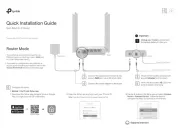
1 September 2025
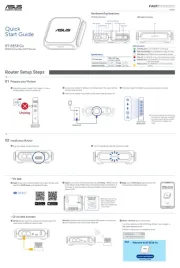
31 Augustus 2025

26 Augustus 2025

26 Augustus 2025

25 Augustus 2025

25 Augustus 2025
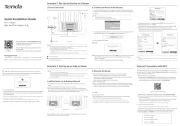
25 Augustus 2025
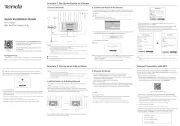
25 Augustus 2025
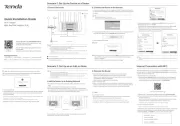
25 Augustus 2025

25 Augustus 2025